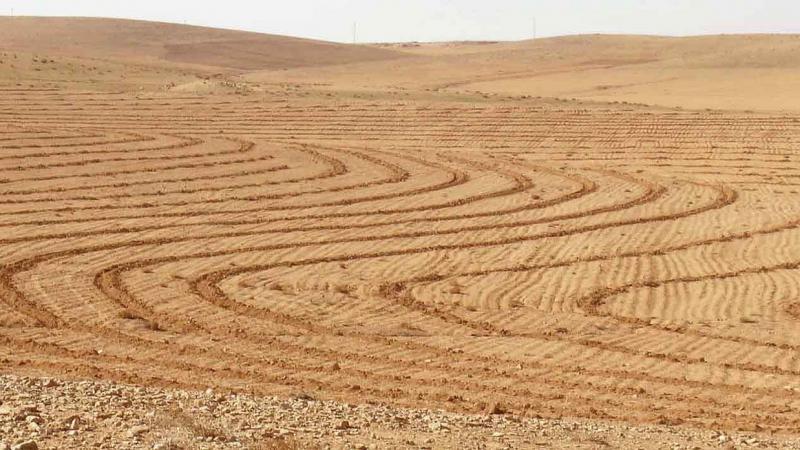Producing ‘more with less’

The dry areas of the developing world face extreme levels of land and water degradation, and climate change is making an already desperate situation significantly worse. Farmers have to contend with less rainfall and more erratic distribution, depleted groundwater resources, salinization, and increasing rates of wind and water erosion.
Since its inception four decades ago, ICARDA has understood the severity of this situation, exploring innovative solutions that help farmers produce ‘more with less’ – whether on fields, across rangelands, or in greenhouses. The Center also supports national partners in their efforts to develop action plans aimed at conserving scarce water resources and implementing sustainable production systems.
ICARDA has been a champion of conservation agriculture; spearheaded a major initiative to combat Iraq’s soil salinity challenges; promoted more efficient irrigation systems; and helped rural communities to construct and maintain simple and practical water-harvesting structures. Millions of farmers and their dependents have benefited from the Center’s research activities since 1977.
Selected water and land management strategies (1977-2017):
ICARDA scientists adopted inexpensive laser-guiding systems to more effectively identify contours and optimal sites for the construction of micro-catchments using Vallerani plows. In Jordan’s ‘Badia’ this technique was implemented on over 1800 hectares (ha) and participating farmers have experienced a doubling of their barley yields. Yields of important rangeland shrubs are also up to 1.6 times higher using this technique.
In the Nile Delta, the Center has adapted the practice of raised-bed planting for poor farmers on fragmented lands. Adjusting seed drills to formulate the beds and sow different crops at the same time with adjustable seed rates is improving water productivity and raising yields. In just four years – from 2010 to 2014 - the land used for mechanized raised-bed cultivation increased from 1670 ha to 45,000 ha. Farmers have experienced: a 25% saving in applied water, a 25% reduction in farming costs, a 30% increase in the efficiency of fertilizer use, and a 15% increase in crop yields.
Across the Arabian Peninsula scalable technology packages for soilless (hydroponic) systems have enabled farmers in water-scarce regions to reap higher-yielding, high-quality cash crops under the harshest growing conditions. Impacts included: a 40% increase in cucumber yields under soilless production systems in Oman; a seven-fold increase in water productivity among farmers growing tomatoes under a soilless culture in United Arab Emirates; and in Kuwait, a 200% increase in annual profits per m2 per year from soilless production in greenhouses.
ICARDA has also promoted the adoption of Conservation Agriculture (CA) – the practice of not plowing farmlands and leaving crop residue in the field for improved soil fertility and water conservation. CA brings optimal production at the best cost. In Iraq, participating farmers achieved average yield increases of 160 kilograms per hectare (kg/ha) and earned an additional 100 USD per hectare (USD/ha). The area devoted to CA now exceeds 15,000 ha – up from 0 in 2007 – and the practice is being promoted in Central Asia and North Africa.
